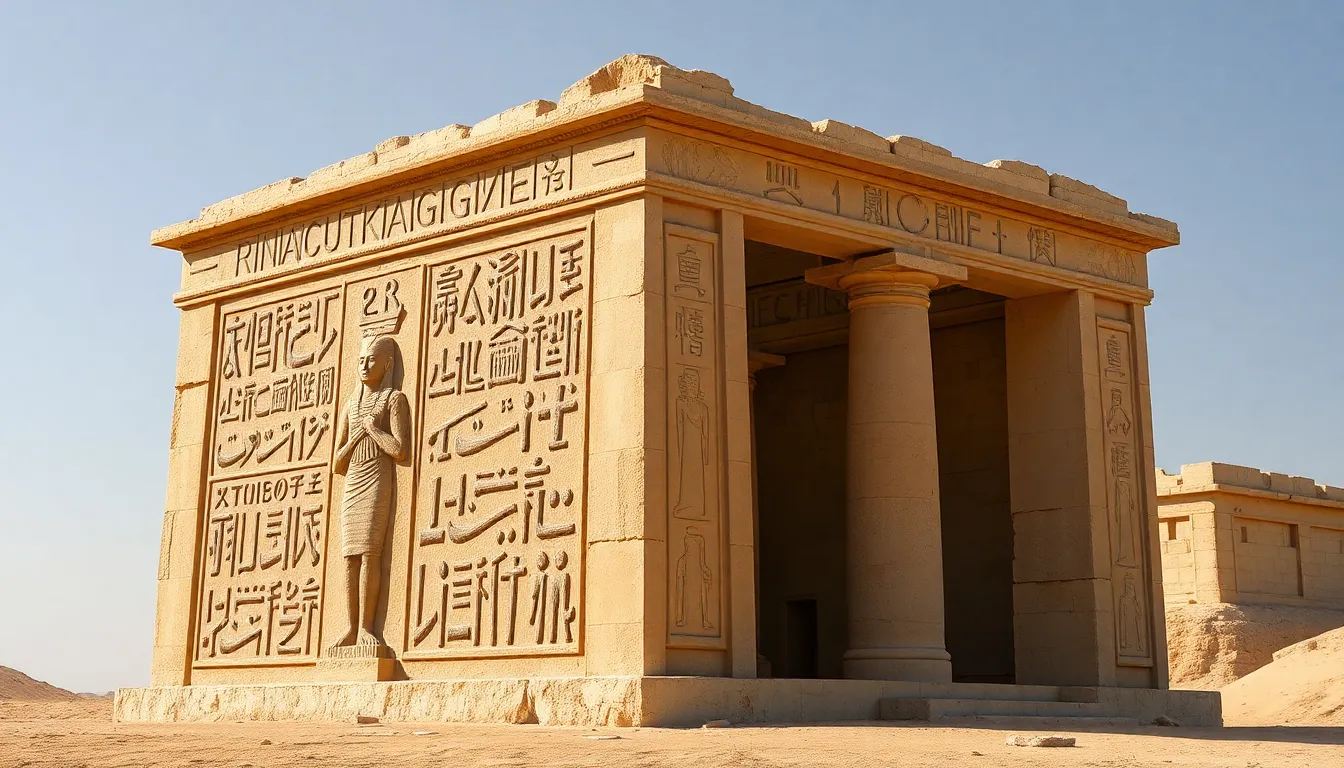Understanding Funerary Texts: A Guide for Beginners
I. Introduction to Funerary Texts
Funerary texts are written inscriptions, poems, or prayers that are intended to honor the deceased and guide them in the afterlife. These texts provide insight into the beliefs, practices, and values of a culture regarding death and the afterlife.
The significance of funerary texts extends beyond their immediate purpose; they serve as historical documents that reveal much about the societies that produced them. Understanding these texts allows us to delve deeper into the cultural, religious, and social dynamics of ancient civilizations.
This article aims to introduce beginners to the fascinating world of funerary texts, exploring their history, types, themes, societal roles, and contemporary relevance.
II. Historical Background
The origins of funerary texts can be traced back to ancient civilizations that sought to ensure the safe passage of the deceased into the afterlife. Different cultures have developed unique forms of these texts, reflecting their specific beliefs and practices.
- Ancient Egypt: The Egyptians are perhaps the most famous for their funerary texts, particularly the “Book of the Dead,” which provided spells and guidance for the deceased.
- Mesopotamia: In ancient Mesopotamia, burial inscriptions often included prayers and laments for the dead, emphasizing the importance of remembrance.
- Other Civilizations: Many cultures, including the Greeks and Romans, also produced funerary texts, each with unique characteristics and purposes.
Key historical figures, such as scribes and priests, played a vital role in the creation and dissemination of these texts, ensuring that the rituals surrounding death were properly observed.
III. Types of Funerary Texts
Funerary texts vary significantly across cultures. Here are some notable examples:
- Egyptian Funerary Texts: The “Book of the Dead” is a collection of spells intended to assist the deceased in navigating the afterlife. Other texts, such as the “Pyramid Texts,” were inscribed in tombs to protect the pharaohs.
- Mesopotamian Burial Inscriptions: These inscriptions were often carved on stone tablets and included prayers for the deceased, invoking the favor of the gods for their journey.
- Greek and Roman Epitaphs: Epitaphs served as inscriptions on gravestones, often poetic in nature, commemorating the lives of the deceased and their contributions.
- Other Cultural Examples: Various cultures, including the Chinese and Indigenous peoples, have their own unique funerary texts that reflect their beliefs about death and the afterlife.
IV. Themes and Symbolism
Funerary texts often encapsulate profound themes and symbols that resonate across cultures. Some common themes include:
- The Afterlife: Many texts focus on the journey of the soul after death, providing guidance and reassurance about what lies ahead.
- Immortality: The desire for eternal life or a lasting legacy is a recurring motif, reflecting the human fear of oblivion.
Symbolic language and imagery are also prevalent in funerary texts. For instance, the use of specific animals, colors, and deities often conveys deeper meanings related to protection, guidance, and transformation.
Additionally, these texts are frequently integrated into rituals that honor the deceased, further emphasizing their significance in the cultural context.
V. The Role of Funerary Texts in Society
Funerary texts are not only artifacts of the past; they also serve as reflections of societal values and beliefs. Their role can be summarized as follows:
- Reflections of Societal Values: Funerary texts often reveal what a society found important, such as honor, remembrance, and the relationship between the living and the dead.
- Impact of Religion and Mythology: The beliefs encoded in funerary texts are deeply intertwined with the religious and mythological frameworks of the society, influencing how death is perceived and managed.
- Social Status and Memory: The content and elaborateness of funerary texts can reflect the social status of the deceased, with more elaborate texts often reserved for the elite.
VI. How to Read and Interpret Funerary Texts
For those interested in studying funerary texts, understanding how to read and interpret them is essential. Here are some basic principles:
- Contextual Understanding: Consider the cultural and historical context of the text to appreciate its significance fully.
- Language and Symbolism: Familiarize yourself with the symbolic language and imagery used in the texts, as these often convey deeper meanings.
Beginners might face challenges such as deciphering ancient scripts or understanding the cultural nuances embedded in the texts. However, various resources can aid in overcoming these obstacles, including:
- Books on ancient religions and funerary practices
- Websites dedicated to archaeology and ancient history
- Academic courses on ancient cultures and texts
VII. Contemporary Relevance
Funerary texts continue to hold relevance in modern culture and academia. Their study contributes to our understanding of human history and cultural evolution.
- Modern Culture and Art: Funerary texts influence contemporary art and literature, inspiring works that explore themes of mortality and memory.
- Archaeology and Anthropology: The study of funerary texts provides valuable insights into past civilizations, informing our understanding of their social structures and beliefs.
- Preservation Efforts: Ongoing digitization and preservation initiatives aim to keep these important texts accessible for future generations.
VIII. Conclusion
In summary, funerary texts are rich in historical, cultural, and symbolic significance. They offer a window into the beliefs and values of ancient societies and continue to resonate with contemporary audiences.
We encourage readers to explore the fascinating world of funerary texts further, as they reveal not only insights into the past but also reflections on our own beliefs about life and death.
Understanding funerary texts is crucial for appreciating the complexity of human experience across time and culture. Their study invites us to consider our own perspectives on mortality and legacy.




